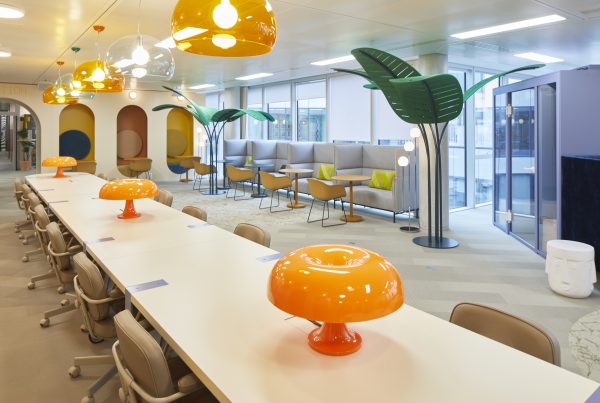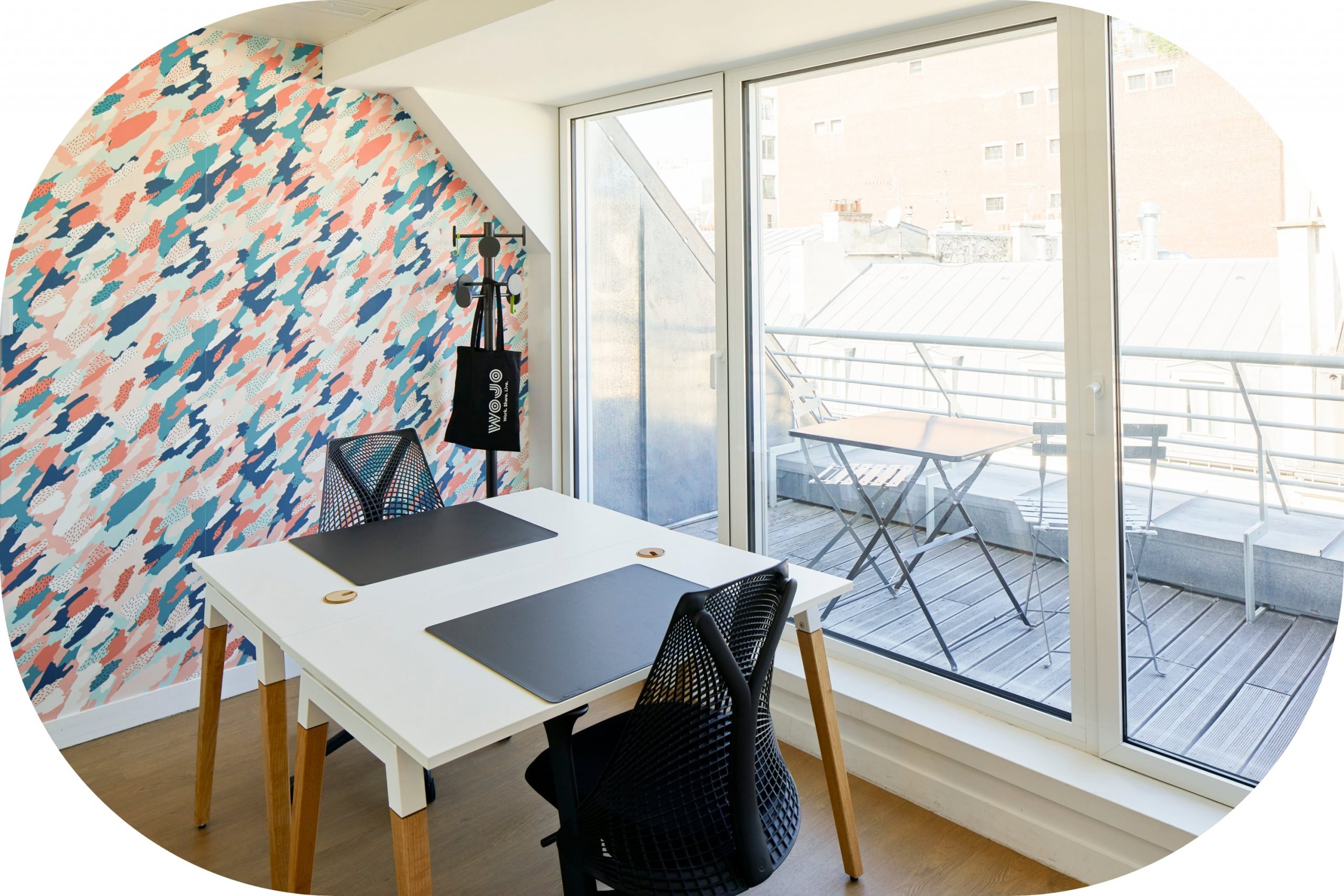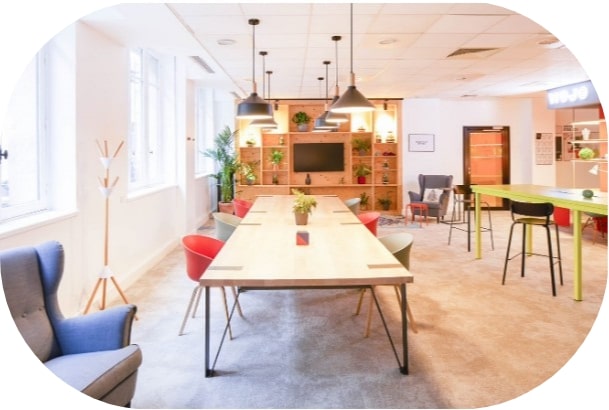The year 2020 will have turned our certainties and habits upside down and anchored remote work in our practices. Many companies have discovered the value of a digital workplace, a digital work environment that allows co-modal working, mixing face-to-face and remote working in a fluid way. The result is business continuity, resilience in the event of a crisis, reinforced cohesion: everything is good in the digital workplace?
What is a digital workplace?
According to Google Translator, a digital workplace is a “digital workplace“. In the same way as they come to the office, each employee has access to a dematerialised work environment. There, he or she can find colleagues and managers, as well as the professional tools necessary to accomplish his or her tasks and missions: calendar, shared documents, video-conferencing tools, chat, etc.
As each sector has its own constraints, the digital workplace must be adapted to ensure that users have access to information sent by the company and a place to exchange with their colleagues. This includes those who do not have their own workstation or are not in front of a screen all day, which implies an app version accessible on a mobile device.
Read also: How to recruit and onboard remotely?
A digital workplace, in concrete terms…
In concrete terms, it is a sort of platform that integrates all or some of these elements, depending on the solutions chosen (some integrate all of them):
– a server where working documents are stored, with shared or limited access management according to each person’s rights
– a server where working documents are stored, with shared or limited access management according to each person’s rights;
– internal messaging between teams, suppliers and service providers: this will very often be a chat room;
– a means of audio and video communication with screen sharing;
– licences giving access to all the usual tools needed according to the business: accounting software, design software, marketing automation;
– tools to encourage collaborative working.
There is a plethora of Digital Workplace offerings on the market. The giant Microsoft’s Teams solution, for example, is no longer in the limelight, but you should know that there are French solutions, such as Talkspirit, developed by a French team and which places proximity to its customers at the heart of its promise.
The user at the heart of the digital workplace
In the office, working remotely or on the move, this digital office (computer, smartphone, tablet) accompanies the digital nomad everywhere and guarantees the fluidity of the activity. It is an essential tool for companies and employees in search of flexibility, allowing the company to operate in a co-modal way.
For a digital workplace to be adopted internally, it must meet the needs of employees, not impose itself on them. It must also save them time, by bringing all their business applications together in one place via APIs or SSO (Single Sign-On) solutions for example, thus avoiding them switching from one to the other, and concentrating all internal communications. Fewer emails, more chat, shared folders and dedicated discussion groups mean easier project follow-up, time savings and fewer irritants.
The digital workplace must not be added to the old tools, at the risk of becoming a gas factory on a daily basis, but also of losing some of the information. Make your teams aware of this: beware of old-fashioned Excel tracking on one’s computer in parallel with a shared tool, and also of email conversations in parallel with chat, etc. In a workplace, any new aggregated tool replaces another: it does not come on top of it.
A real foundation for the employee experience
The digital workplace gives employees real autonomy in their work organisation, and a flexibility that is increasingly demanded and appreciated. A recent study by Wojo and OpinionWay (October 2020) reveals that 56% of them consider the à la carte office as a reality. In the near future, they intend to choose their city and workplace (office, coworking space near their home, home-based teleworking) according to their professional and personal schedule of the day, and the services they need. Geographical flexibility is also becoming a priority for employees. According to the Wojo study, one in two employees would be willing to move to improve their quality of life if they could work remotely three days a week from home or in a nearby coworking space.
For companies that are prepared to rely on trust and participative and collaborative management, a digital workplace is the essential tool for making a successful transition to a co-modal organisation.
Moving to the digital work environment, yes, but not without nets
The implementation of a digital workplace and the generalisation of co-modal work must be accompanied by a strategic reflection on the place of technology in the company, as well as a training component for employees.
The choice of a particular tool can be decisive for the sustainability of the business and its internal adoption. More than ever, CIOs are leaders of change, and their recommendations can have a lasting impact on the company’s performance. Advice to managers: listen to your experts, give them the means to train and inform themselves on the tools adapted to your needs to succeed in the digital transformation.
As for HR, it is up to them to ensure the adoption of these new tools by providing training, information on the risks of hacking and cybersecurity, good practice charters and regular monitoring of usage. The American firm Gartner estimates that 30% of the competitive advantage (1) of organisations will come from the ability of employees to exploit new technologies creatively.
To sum up, what are the advantages of a digital workplace?
A company that offers its employees a digital work environment combined with different work spaces (private offices, communal living spaces, access to coworking spaces close to their homes or clients) thus guarantees:
- The flexibility and agility of its work organisation.
- The perpetuation of a co-modal operation, with the possibility of distributing its employees over a wide geographical area.
- The fluidity of exchanges, a guarantee of performance and efficiency.
- Its resilience in the event of a crisis or difficulties in accessing traditional offices.
- An improved employee experience.
- A brand image oriented towards new uses.
All this is provided that employees are supported in adopting this new tool, and that they choose the one that meets their needs without creating new constraints!
As you will have realised, the digital workplace is an essential part of the company’s digital transformation, and has become indispensable for ensuring the continuity of the business in a world where borders are constantly changing. A veritable hub of information and interaction, it paves the way for a new organisation of work, where the co-modal is king and remote working is the norm, at least part of the time.
1 – Gartner Top Technologies and Trends Driving the Digital Workplace, 2019







